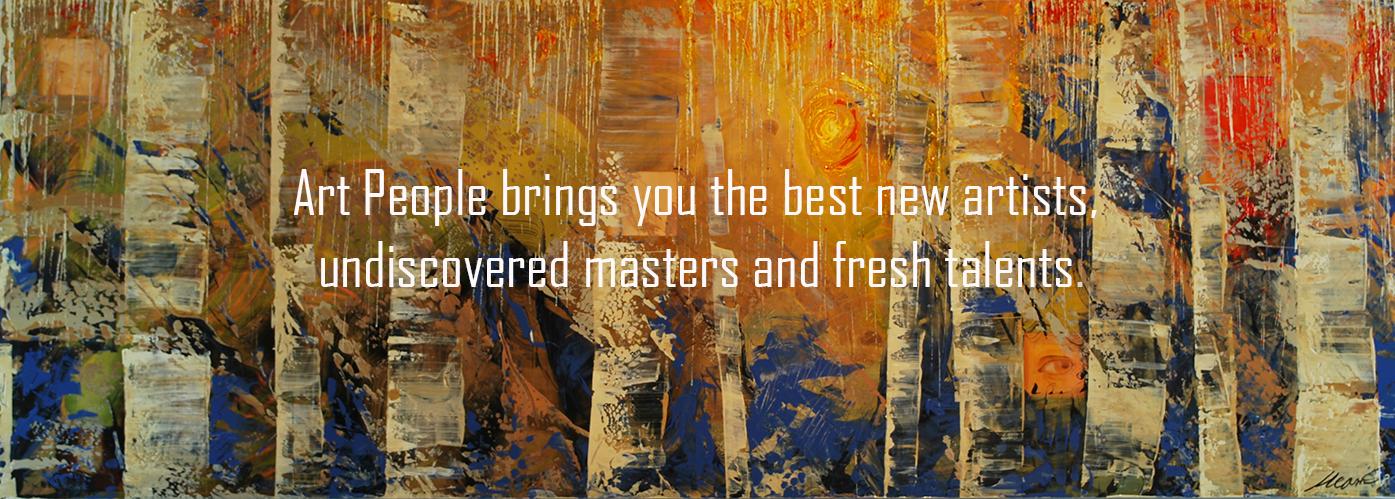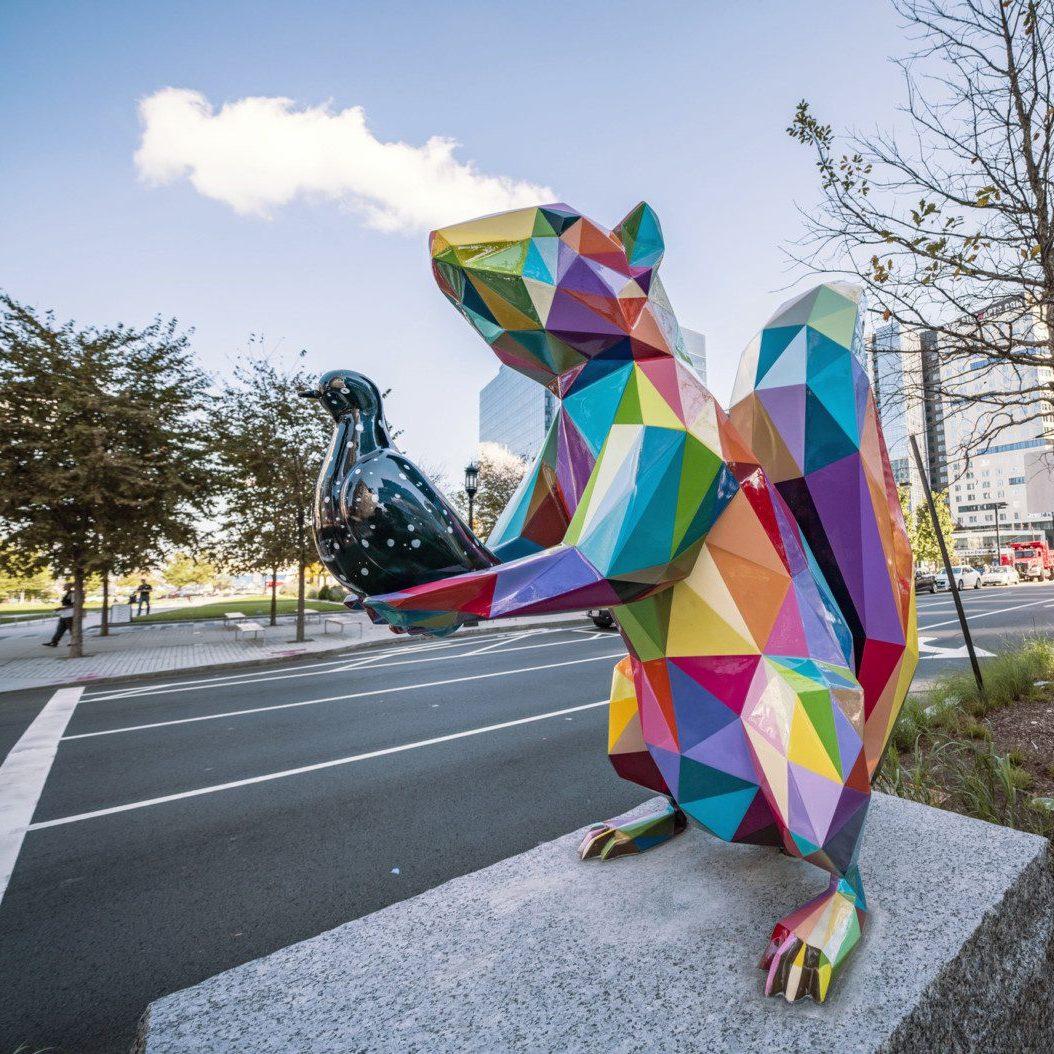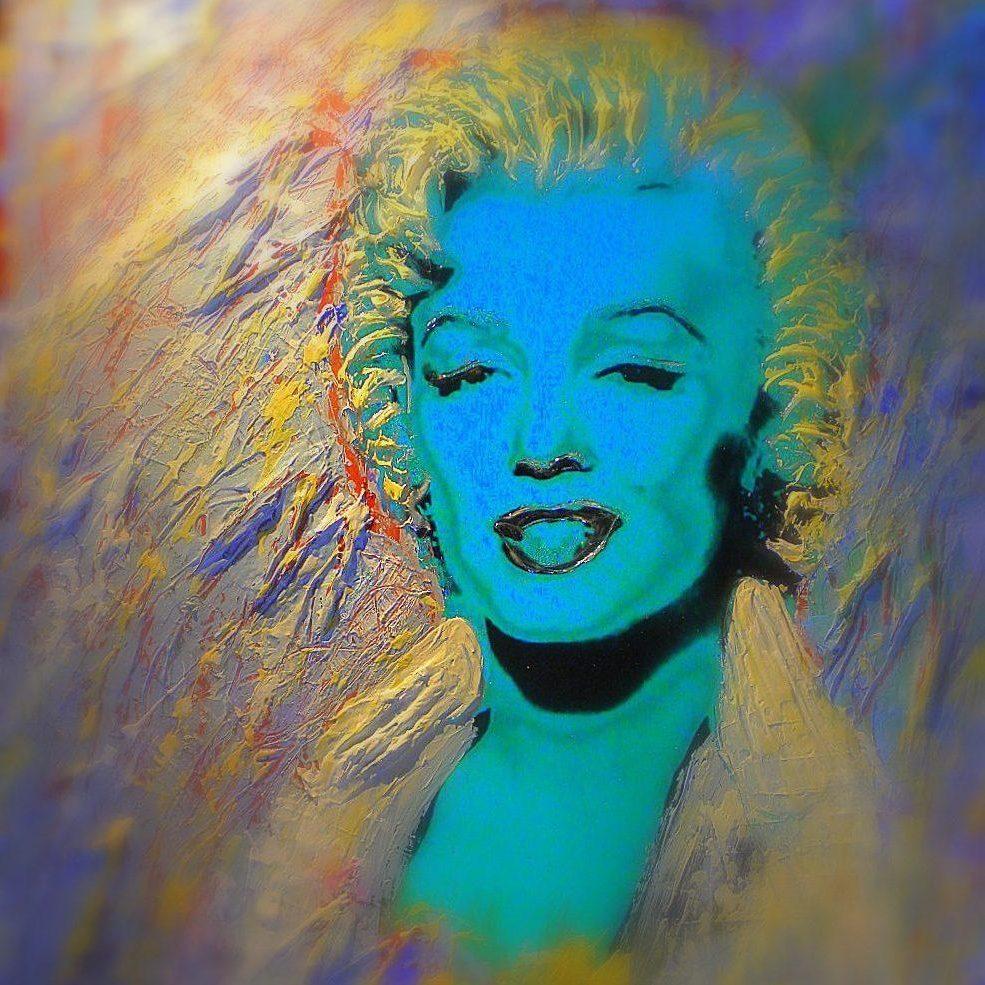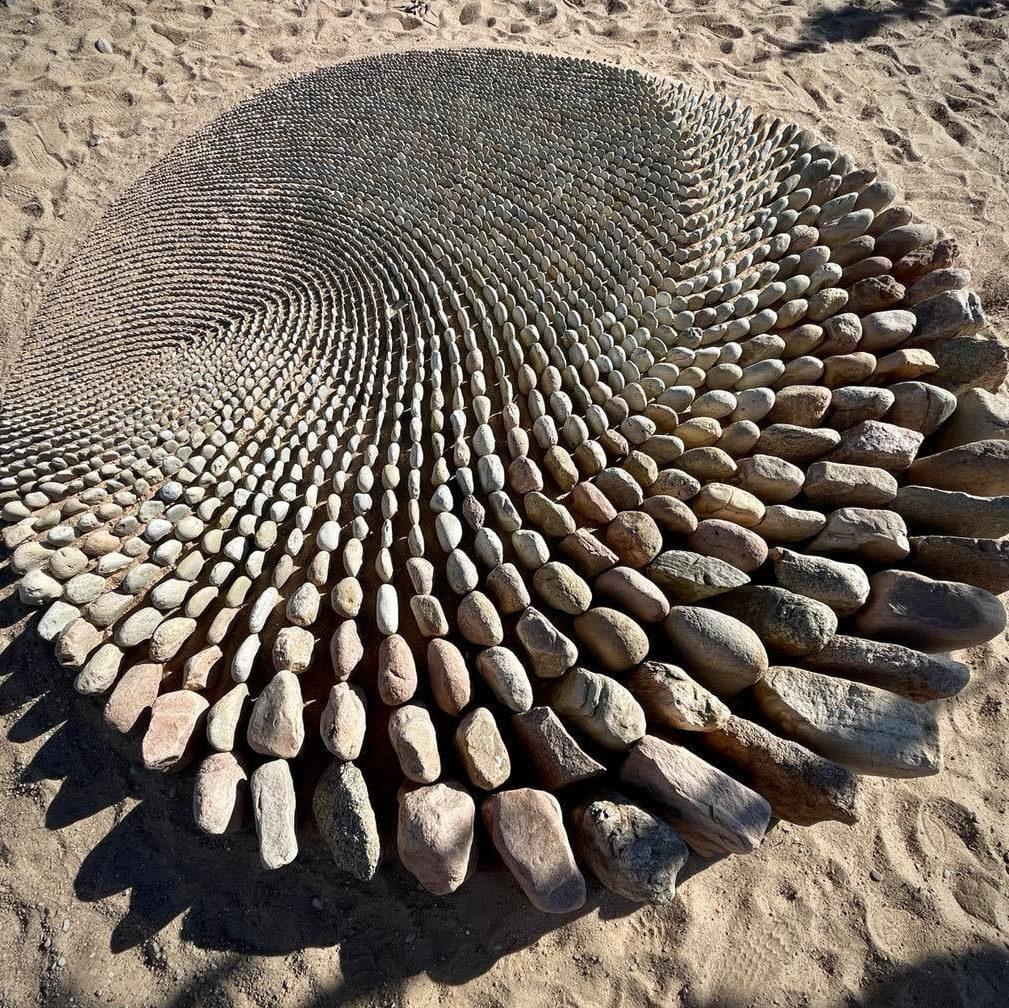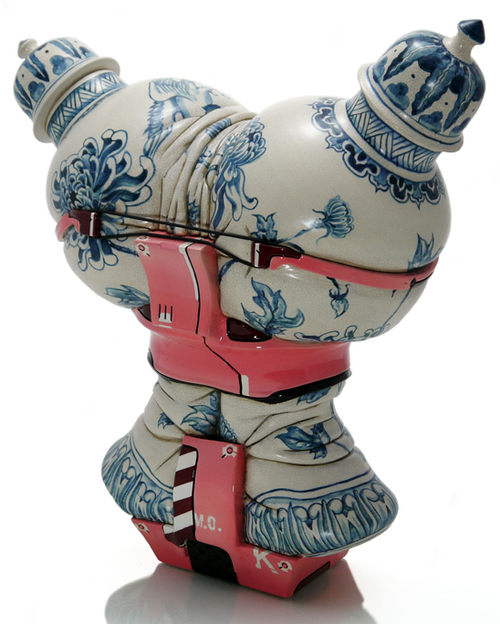BRENDAN LEE SATISH TANG | Manga Ormolu.
Ceramic art Vases in Ming-Dynasty style have been fused with partial mecha objects seen in futuristic Japanese anime and manga.

Manga Ormolu enters the dialogue on contemporary culture, technology, and globalization through a fabricated relationship between ceramic tradition (using the form of Chinese Ming dynasty vessels) and techno-Pop Art. The futuristic update of the Ming vessels in this series recalls 18th century French gilded ormolu, where historic Chinese vessels were transformed into curiosity pieces for aristocrats. But here, robotic prosthetics inspired by anime (Japanese animation) and manga (the beloved comics and picture novels of Japan) subvert elitism with the accessibility of popular culture.

Working with Asian cultural elements highlights the evolving Western experience of the “Orient.” This narrative is personal: the hybridization of cultures mirrors my identity as an ethnically-mixed Asian Canadian. My family history is one of successive generations shedding the markers of ethnic identity in order to succeed in an adopted country – within a few generations this cultural filtration has spanned China, India, Trinidad, Ireland and Canada.

While Manga Ormolu offers multiple points of entry into sociocultural dialogue, manga, by nature, doesn’t take itself too seriously. The futuristic ornamentation can be excessive, self-aggrandizing, even ridiculous. This is a fitting reflection of our human need to envision and translate fantastic ideas into reality; in fact, striving for transcendence is a unifying feature of human cultural history. This characteristic is reflected in the unassuming, yet utterly transformable material of clay. Manga Ormolu, through content, form and material, vividly demonstrates the conflicting and complementary forces that shape our perceptions of Ourselves and the Other.

My artistic practice embodies the influences, tensions and contradictions that define the postmodern world. At once, my works exhibit the paradoxical tendency to be irreverent, frivolous, and playful, as well as thoroughly engaged in critical reflection. Admittedly, my aesthetic is driven by a hedonistic engagement with visual culture, yet I remain apprehensive about the all-encompassing diversions of contemporary society. Although my works are non-functional, I often employ vessel forms, or otherwise allude to incongruous functionality (for example, “wiring” of non-electronic parts). These apparent tensions may be particularly salient to my chosen field of ceramics, a medium interested in the notion of art versus craft.

It is perhaps due to my sense of belonging in the remix generation (as evidenced by electronic music and its “mash-ups”), that I tend to borrow and reconfigure ideas and influences to create works that I find both visually and intellectually compelling. I liken aspects of my artistic practice to channel surfing, where I absorb, interpret and bank a great deal of visual information to inform my personal aesthetic. Always interested in refined forms, I draw inspiration from such diverse realms as contemporary pop culture (e.g., plastic toys and Japanese comics), art history (e.g., in the form of Chinese Ming dynasty vessels and 18th century French rococo), and historical and contemporary practices in self-portraiture. Drawing on such rich cultural symbology, I abstract and configure images, forms and colors within a narrative. Humour is an essential communication device in my work; I find this is an especially effective means of viewer engagement when addressing sensitive subject areas (e.g., war, climate change, geo-politics).

As evidenced in my reconfiguration of historical art traditions and my use of mixed media, I am intrigued by cultural appropriation and hybridity. Undoubtedly, these predominant themes in my work are a reflection of my own ambiguous cultural identity. Although I am considered Asian Canadian within the dominant culture’s framing, my family has lost even vestiges of connectivity to Asia through several generations of intercontinental migration and ethnic intermarriage. I have used self-portraiture to explore issues of race, class and sexual identity in greater depth.
While my aesthetic is driven by a seemingly manic consumption of visual culture, my work is labour intensive and detail oriented. I place high value on craftsmanship, as refinement allows me to reference art history, and notions of class and value. I employ hand painting, gold luster, airbrushing, hand-modeled filigree, and photo-based decals, among other means, to create alluring pieces. Working primarily in clay, I exploit its ability to convincingly emulate other materials, such as “robotic” prosthetics. Undeniably, working in clay offers not only satisfying technical challenges, but also vital kinesthetic connectivity to my artistic practice.
Through my approach to art making, I work as a visual ethnographer – documenting and interpreting contemporary culture through my own assumptions, preferences, values and personal history. My aim is to create work that serves as a portal for reflection and dialogue.

Brendan Tang was born in Dublin, Ireland of Trinidadian parents and is a naturalized citizen of Canada. He earned his formal art education on both Canadian coasts and the American Midwest, where he learn to appreciate the ceramic medium. Tang has lectured at conferences and academic institutions across the continent, and his professional practice has also taken him to India, Europe and Japan. He has been a resident artist at the Archie Bray Foundation for the Ceramic Arts (Helena, MT) and has participated in an international residency at the European Ceramic Work Centre (‘s-Hertogenbosch, NL).
Tang has been exhibited at the Museum of Fine Art in Boston, the Musée d’art contemporain de Montréal in QB, and Nelson-Atkins Museum of Art in Kansas City, as well being a recipient of the 2016 Biennale Internationale de Vallauris contemporary ceramic award. He has been profiled by The Knowledge Network, and featured in printed publications including The National Post, Wired (UK and Italy), and ELLE (Canada). Tang’s work can be found in such collections as the Seattle Art Museum, the Ariana Muse in Geneva SW, Canada House in London (UK) and the Art Bank of Canada.
Tang dedicates his full attention to his professional art practice in Vancouver BC, where he continues to explore the interface between culture and material.
If you are interested in purchasing one of my works please contact GALLERY JONES, VANCOUVER
BRENDAN LEE SATISH TANG | Manga Ormolu

